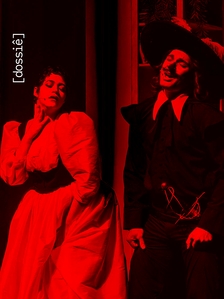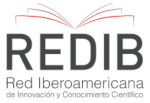Performing the costume in scenographies of the body
Designing in the expanded field
DOI:
https://doi.org/10.26563/dobras.v18i43.1887Keywords:
Expanded costume, Scenographic costume, Body, Skin, FabricAbstract
The purpose of costume in the field of expanded is to overflow the medium that sustains it: the body. This text explores the possibilities of costume outside the boundaries of theatrical language, focusing on three elements: body, space and fabric. Unlike the canonical scene, the expanded scene is not defined or organized as a stable model of creation. This paradigm leads us to reflect on our role as designers, it gives us the opportunity to formulate visual languages, approaches and disciplinary connections with costume8. For this analysis, we start from the premise that: “if it is the body that mobilizes and puts into action the costume, then it is the costume that makes the body visible as space” (Velásquez9, 2010, p. 30 cited by Farías, 2022, p. 31). In “Per-formar el vestuario” I take as a case study the scenographic costumes10 that I designed for the play Somos Arena. Canto de una madre, a textile piece that, for its projection, combines two disciplines: costume and scenography.
Downloads
References
CAMPI, Isabel; VENTOSA, Silvia Muñoz (Coords.). Tejidos, modas y cuerpos: IV Coloquio de Investigadores en Textiles y Moda. Chairperson IV Coloquio de investigadores en textil y moda. España, 2023. Acceso en: https://historiadeldisseny.org/web/wp-content/uploads/IV-COLOQUIO-TEXTIL-LibroActas_LD.pdf
CATTS, Oron; ZURR, Ionat. Hacia una nueva clase de ser-El cuerpo extendido. Artnodes, Revista de intersecciones entre artes, ciencias y tecnologías, n. 6, 2006. Acceso en: www.uoc.edu/artnodes
DELEUZE, Gilles; GUATTARI, Félix. Mil mesetas. Capitalismo y esquizofrenia. España: Pretextos, 2004. Acceso en: http://kaleidoscopio.com.ar/fs_files/user_img/textos_estetica%20rececpcion/Deleuze_Guattari_Mil%20mesetas.pdf
FARÍAS, Estefany Moreno. El cuerpo y el vestuario en la dramaturgia visual contemporánea. Estudio Teatro. Sala de Ensayos, año 3, n. 4, 2022. Acceso en: https://www.ensad.edu.pe/wp-content/uploads/2022/05/ET4_EstefanyFarias.pdf
FARGAS, Joaquín. Bio wear. Acceso en: https://www.joaquinfargas.com/wp-content/uploads/2016/02/biowearespanol.pdf
FERNÁNDEZ, Claudia Silva. El vestido como artefacto del diseño: contribuciones para su estudio y reflexión al interior del pensamiento del diseño. 2016. Tesis (Doctorado en Diseño y Creación). Universidad de Caldas. Facultad de artes y Humanidades, 2016. Acceso en:
https://proyectomedussa.com/el-proyecto-de-diseno-del-cuerpo-vestido-sus-propositos-y-trascendencia/
GAONA, S.; Zaretti, A. (Coord.) Errancias, corporalidad, información y experiencia. 1ª ed., Neuquén: Centro de Estudios en Filosofía de la Cultura, 2015. Acceso en: https://www.cefc.org.ar/assets/files/Errancias.pdf
GUTMAN, Laura. Habitar el traje. Una reflexión sobre el vestuario teatral. Cuaderno 39. Argentina: Centro de Estudios en Diseño y Comunicación, 2012.
HOFFMANN, Ana. Peles e panos da cena: Performance Sulcos e a materialidade do grau zero do figurino. PÓS:Revista do Programa de Pós-graduação em Artes da EBA/UFMG, v. 14, n. 32, set.-dez. 2024ISSN: 2238-2046. Acceso en: https://doi.org/10.35699/2238-2046.2024.52671 DOI: https://doi.org/10.35699/2238-2046.2024.52671
HOPKINS, Cecilia. Las dos visitas de Kantor a Buenos Aires, Picaderocuadernos. El albergue de la memoria Kantor en perspectiva, n. 31, Argentina: Editorial INTeatro, 2017. Acceso en: https://inteatro.ar/editorial/cuaderno-de-picadero-no31/
MASSARA, Gisela. Cuerpo y bioarte, la piel como medio de expresión. Revista Corpo-grafías: Estudios críticos de y desde los cuerpos, v. 2, n. 2, p. 88-99, 2015. Acceso en: https://revistas.udistrital.edu.co/index.php/CORPO/article/view/11156
VELÁSQUEZ, Mauricio Posada; FERNÁNDEZ, Claudia. Stranger bodies-Fold bodies/Cuerpos extraños. Cuerpos plegados. Fluxus Magazine, n.5, 2010, p. 30. Acceso en: http://www.fluxusmagazine.com/fluxusmagazine_05/fluxusmagazine_05.html

Downloads
Published
How to Cite
Issue
Section
License
Copyright (c) 2025 Mahatma Ordaz Domínguez

This work is licensed under a Creative Commons Attribution-NonCommercial-ShareAlike 4.0 International License.
The copyrights of the works published in this journal belong to the author, and dObra[s] holds the rights of first publication. Due to their publication in this open access journal, any work here is free to use, with its own attributions, in educational and non-commercial applications.









